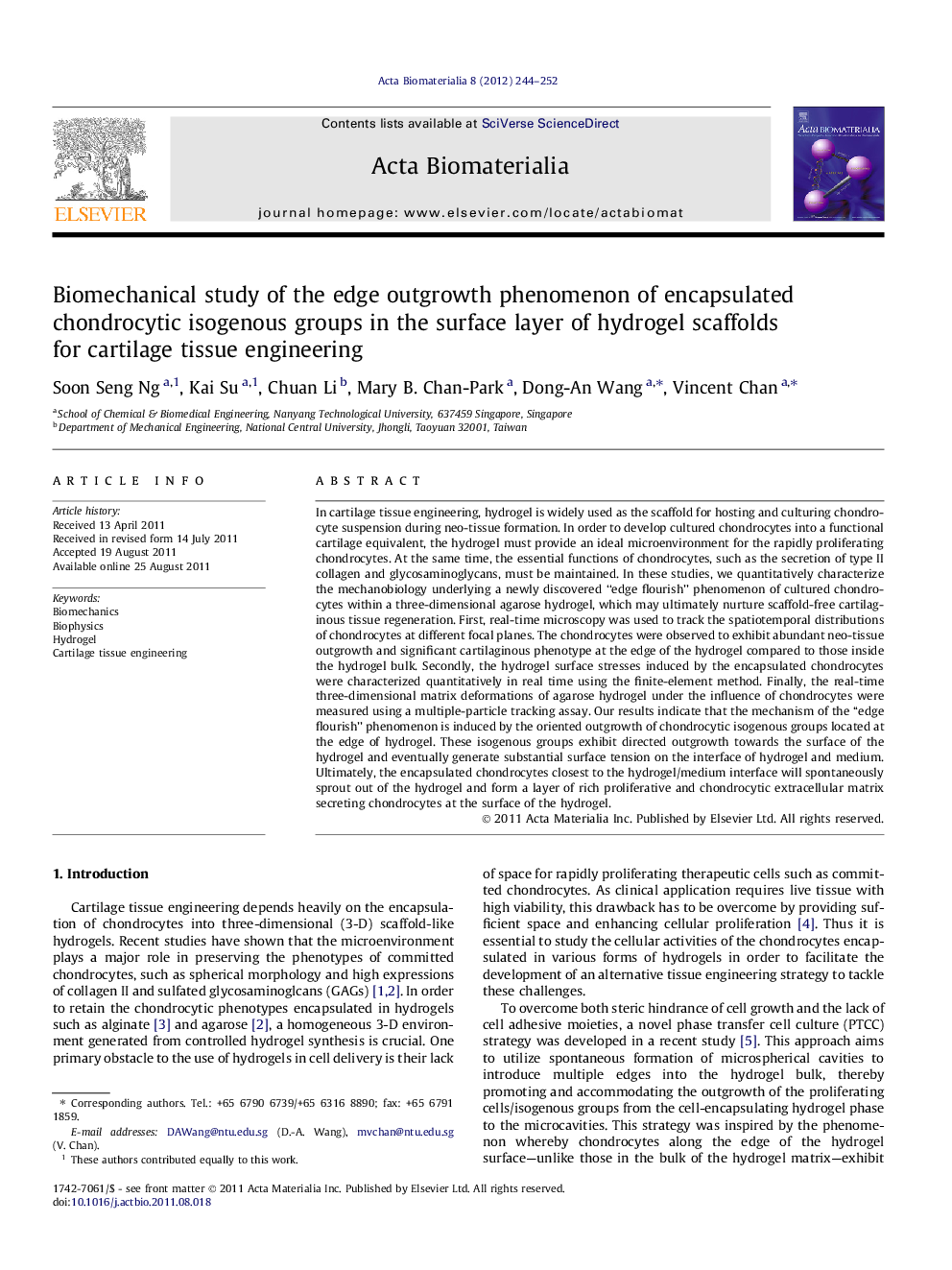| کد مقاله | کد نشریه | سال انتشار | مقاله انگلیسی | نسخه تمام متن |
|---|---|---|---|---|
| 10160093 | 65 | 2012 | 9 صفحه PDF | دانلود رایگان |
عنوان انگلیسی مقاله ISI
Biomechanical study of the edge outgrowth phenomenon of encapsulated chondrocytic isogenous groups in the surface layer of hydrogel scaffolds for cartilage tissue engineering
دانلود مقاله + سفارش ترجمه
دانلود مقاله ISI انگلیسی
رایگان برای ایرانیان
کلمات کلیدی
موضوعات مرتبط
مهندسی و علوم پایه
مهندسی شیمی
بیو مهندسی (مهندسی زیستی)
پیش نمایش صفحه اول مقاله

چکیده انگلیسی
In cartilage tissue engineering, hydrogel is widely used as the scaffold for hosting and culturing chondrocyte suspension during neo-tissue formation. In order to develop cultured chondrocytes into a functional cartilage equivalent, the hydrogel must provide an ideal microenvironment for the rapidly proliferating chondrocytes. At the same time, the essential functions of chondrocytes, such as the secretion of type II collagen and glycosaminoglycans, must be maintained. In these studies, we quantitatively characterize the mechanobiology underlying a newly discovered “edge flourish” phenomenon of cultured chondrocytes within a three-dimensional agarose hydrogel, which may ultimately nurture scaffold-free cartilaginous tissue regeneration. First, real-time microscopy was used to track the spatiotemporal distributions of chondrocytes at different focal planes. The chondrocytes were observed to exhibit abundant neo-tissue outgrowth and significant cartilaginous phenotype at the edge of the hydrogel compared to those inside the hydrogel bulk. Secondly, the hydrogel surface stresses induced by the encapsulated chondrocytes were characterized quantitatively in real time using the finite-element method. Finally, the real-time three-dimensional matrix deformations of agarose hydrogel under the influence of chondrocytes were measured using a multiple-particle tracking assay. Our results indicate that the mechanism of the “edge flourish” phenomenon is induced by the oriented outgrowth of chondrocytic isogenous groups located at the edge of hydrogel. These isogenous groups exhibit directed outgrowth towards the surface of the hydrogel and eventually generate substantial surface tension on the interface of hydrogel and medium. Ultimately, the encapsulated chondrocytes closest to the hydrogel/medium interface will spontaneously sprout out of the hydrogel and form a layer of rich proliferative and chondrocytic extracellular matrix secreting chondrocytes at the surface of the hydrogel.
ناشر
Database: Elsevier - ScienceDirect (ساینس دایرکت)
Journal: Acta Biomaterialia - Volume 8, Issue 1, January 2012, Pages 244-252
Journal: Acta Biomaterialia - Volume 8, Issue 1, January 2012, Pages 244-252
نویسندگان
Soon Seng Ng, Kai Su, Chuan Li, Mary B. Chan-Park, Dong-An Wang, Vincent Chan,